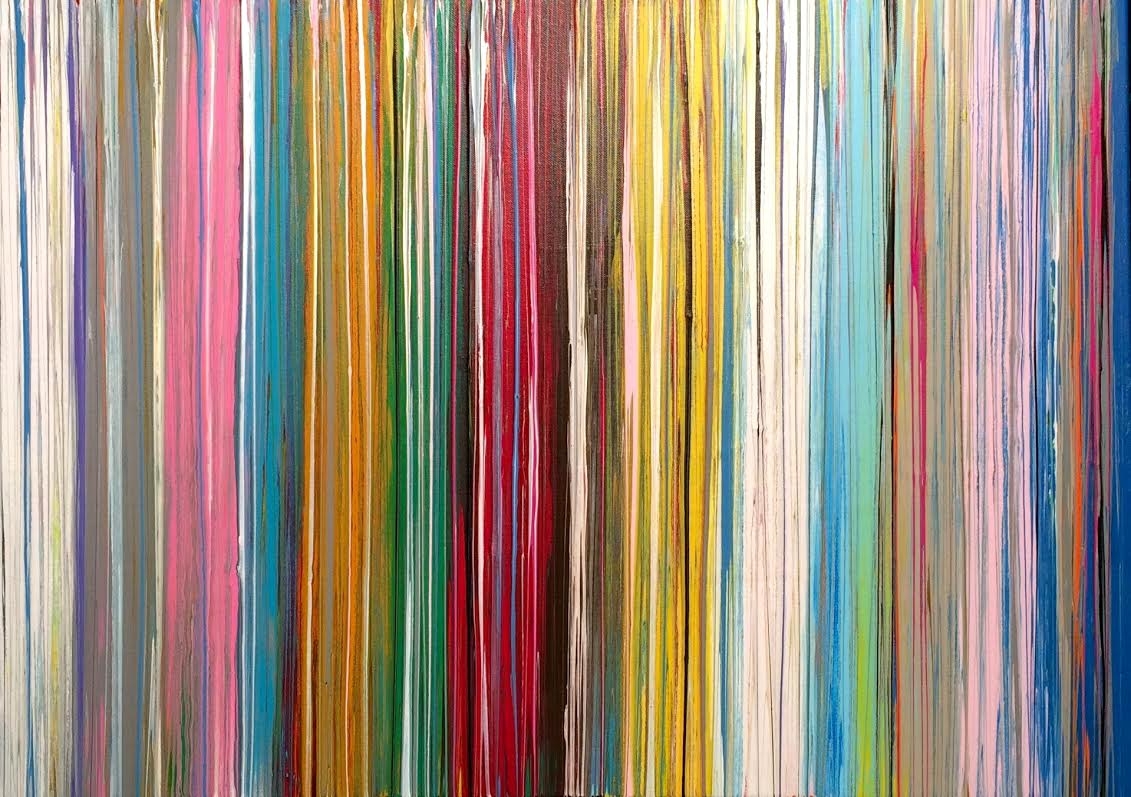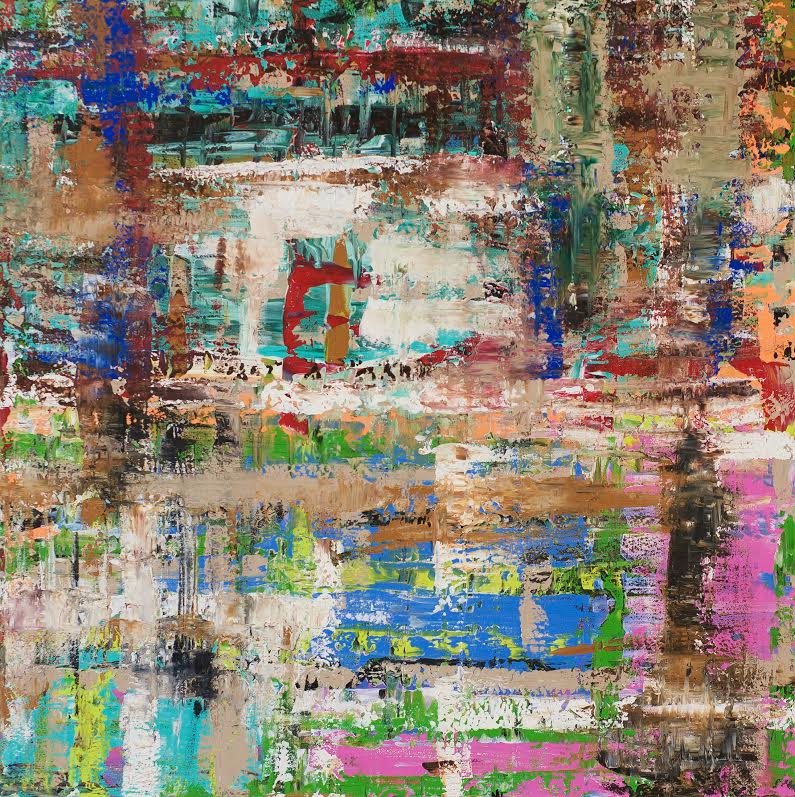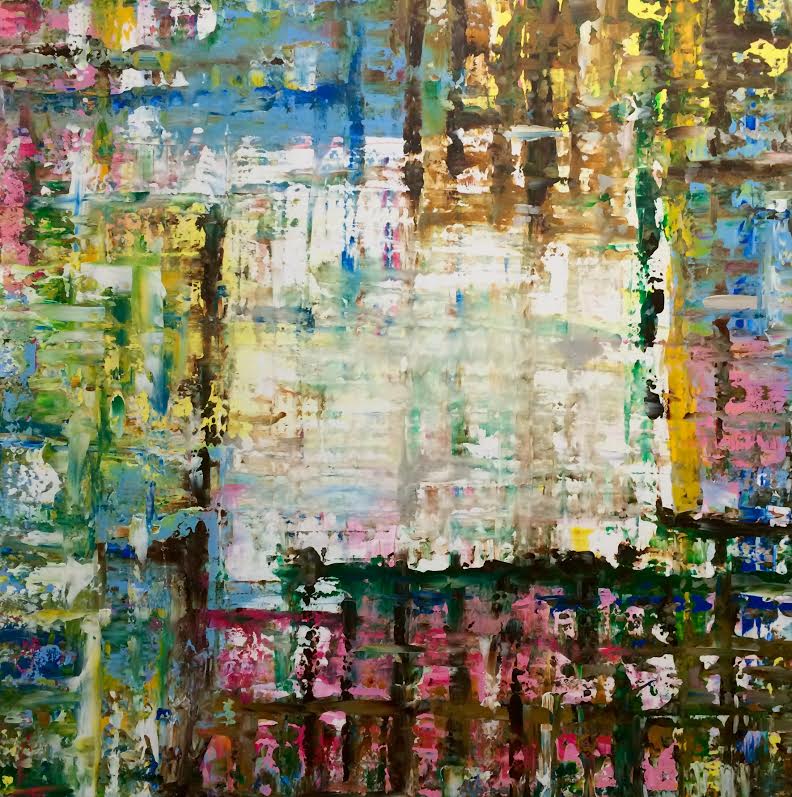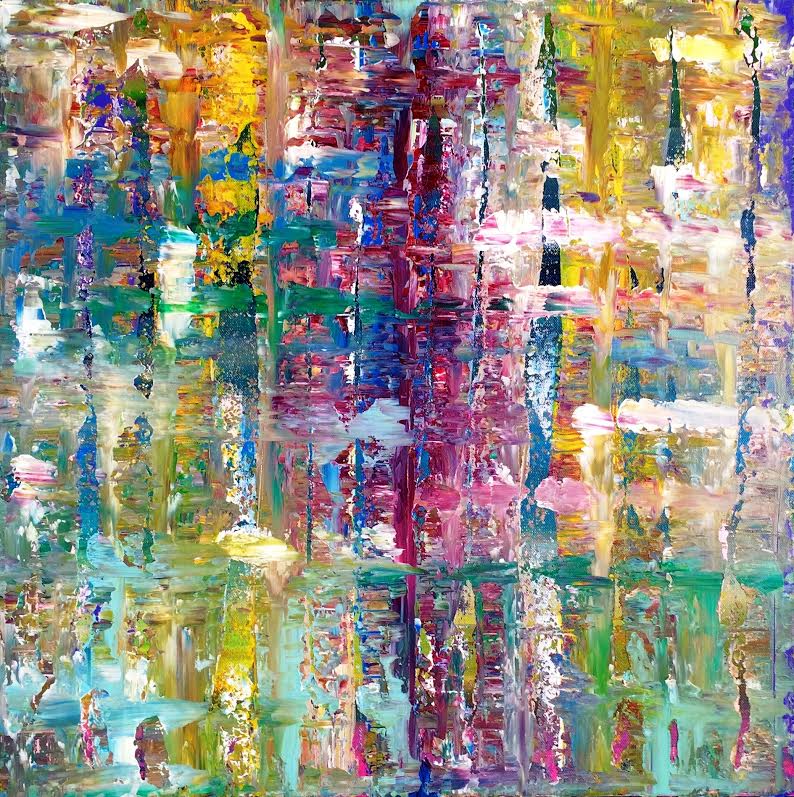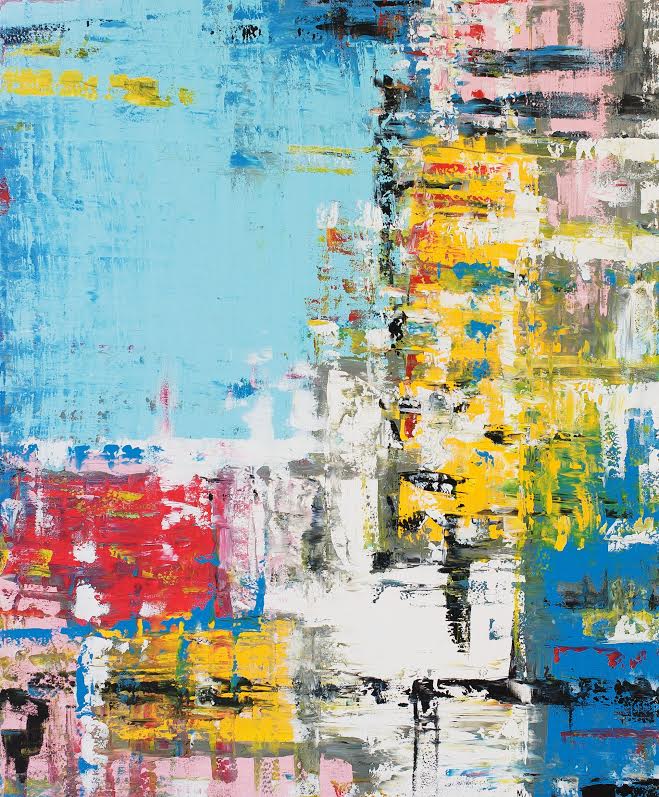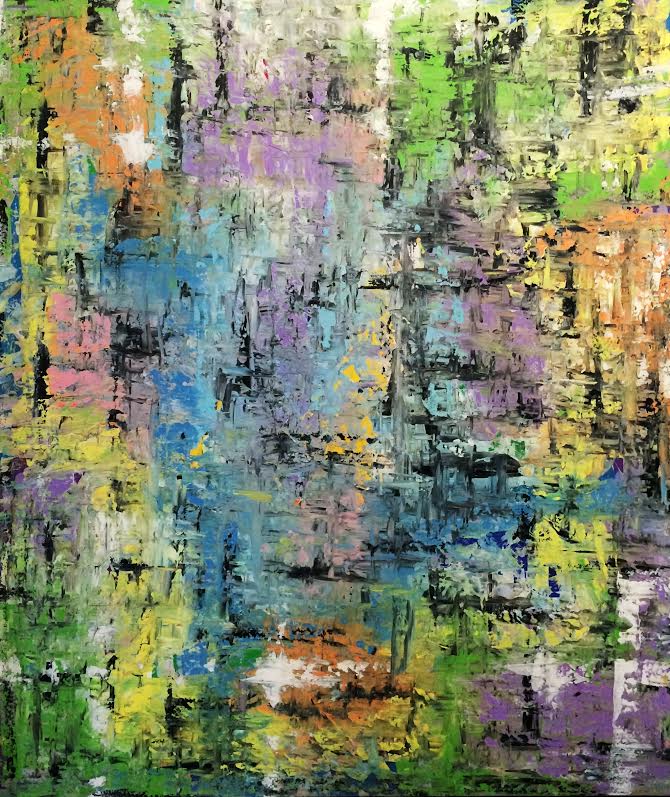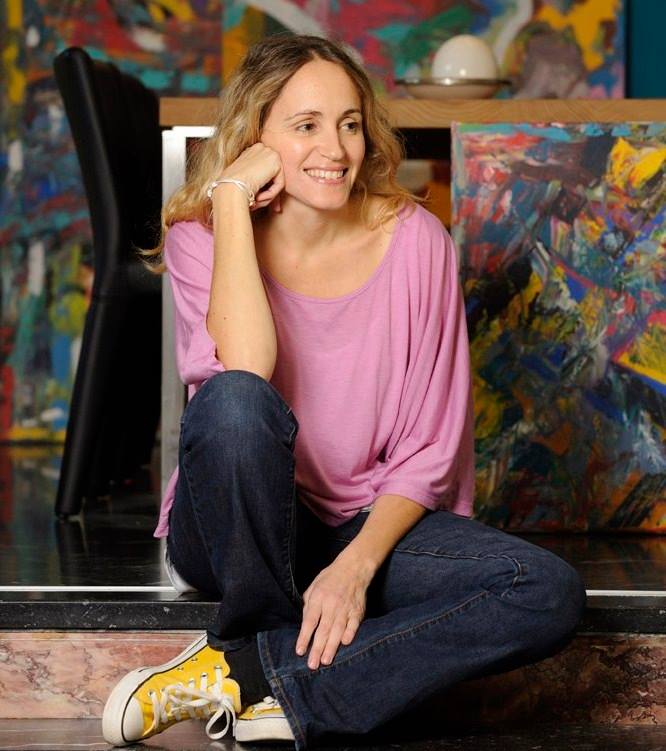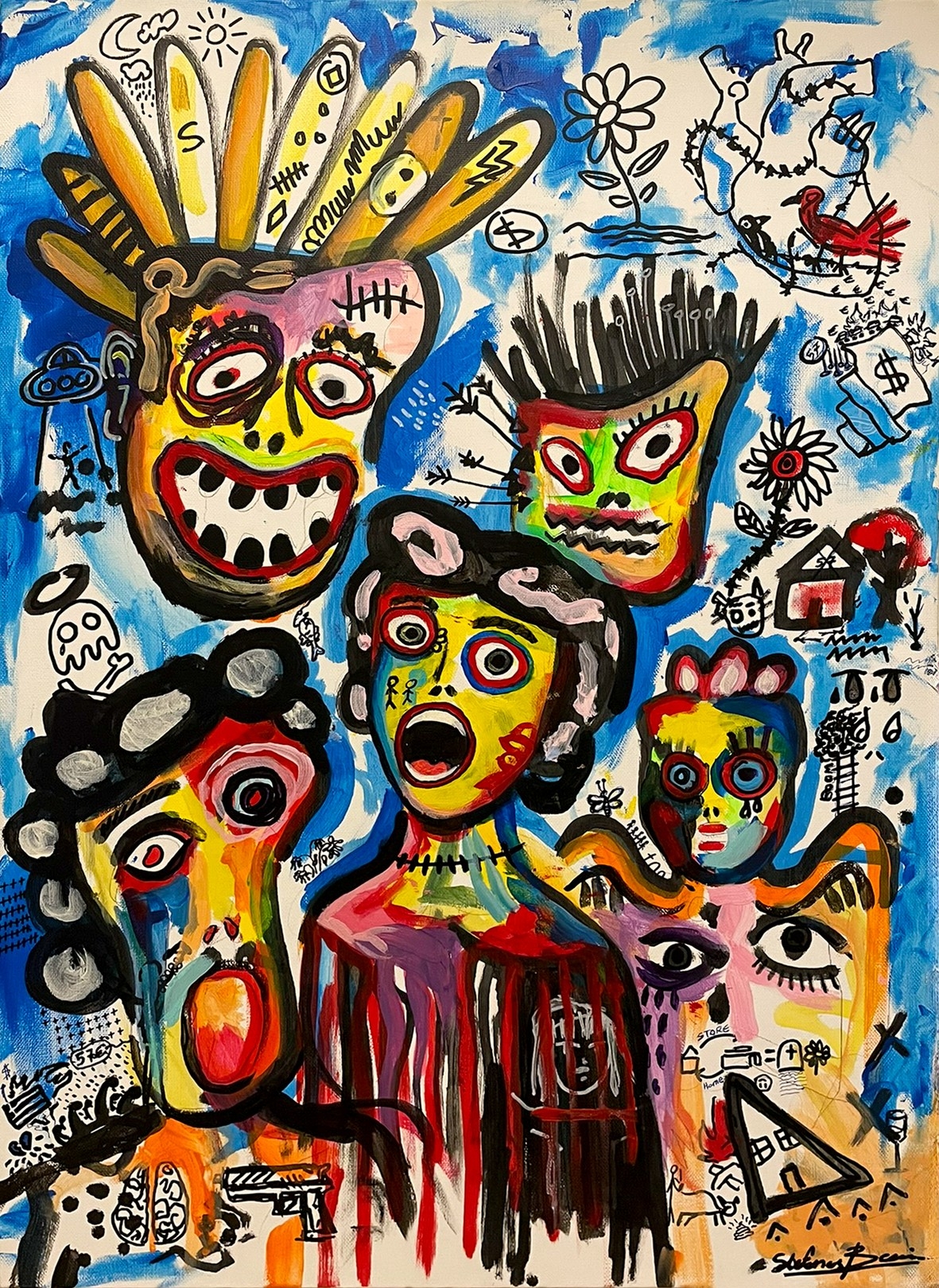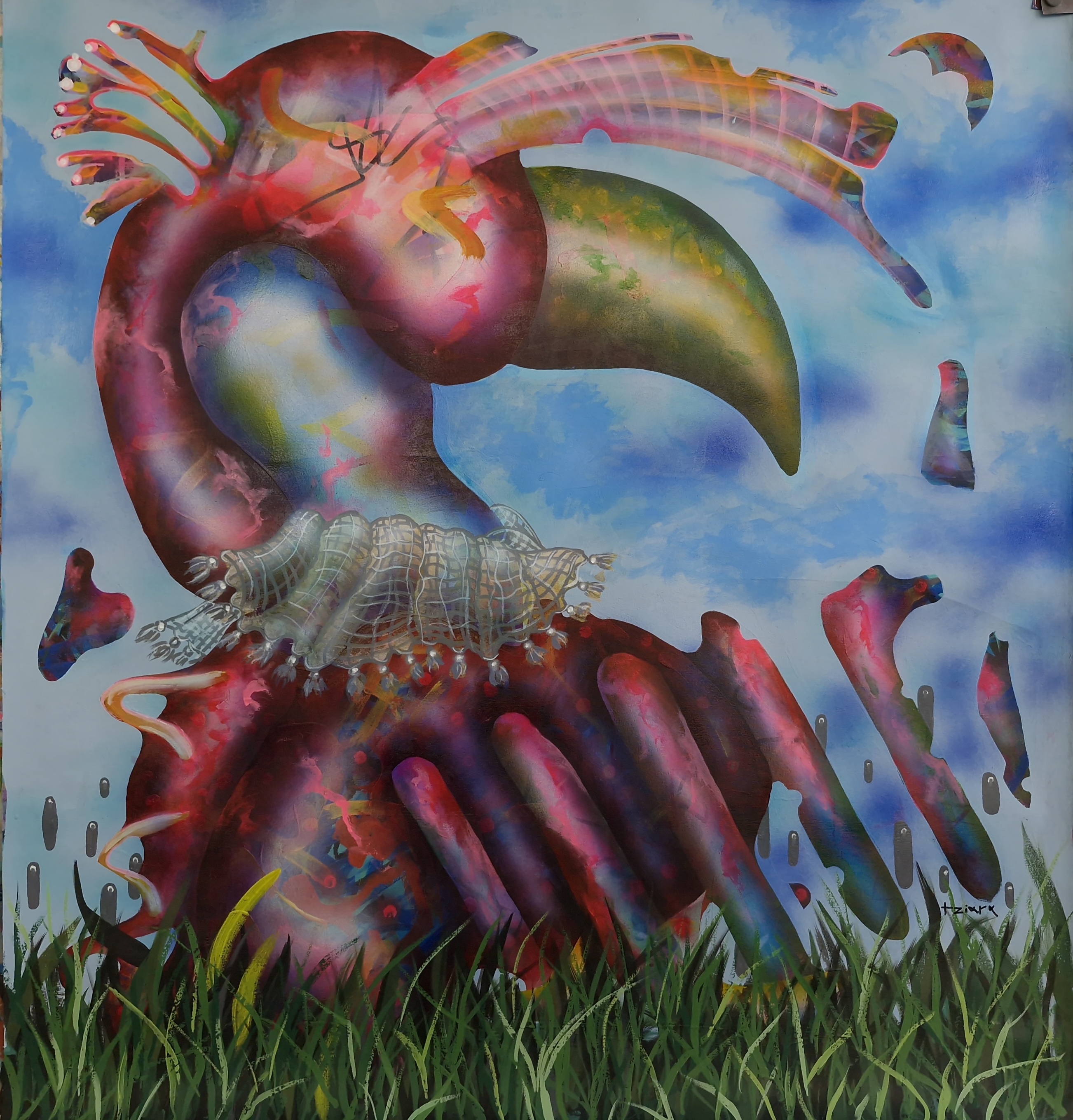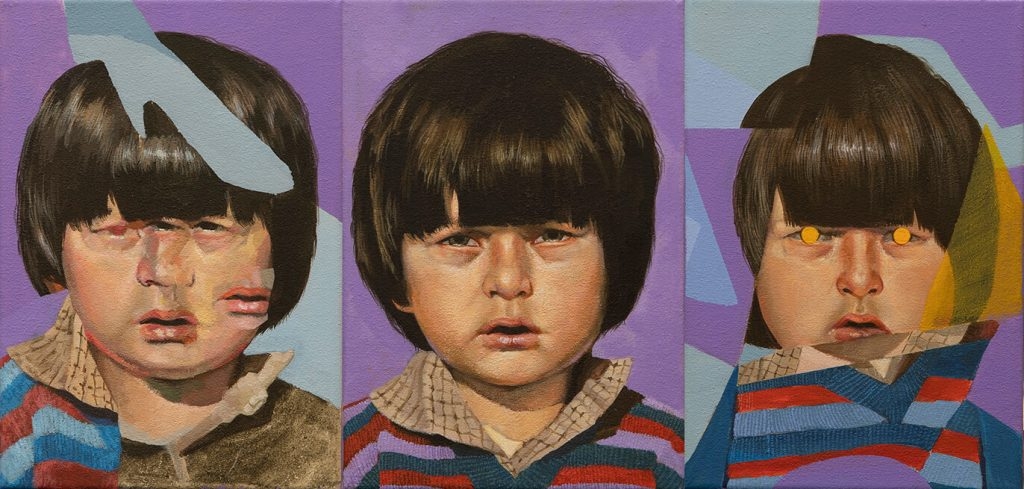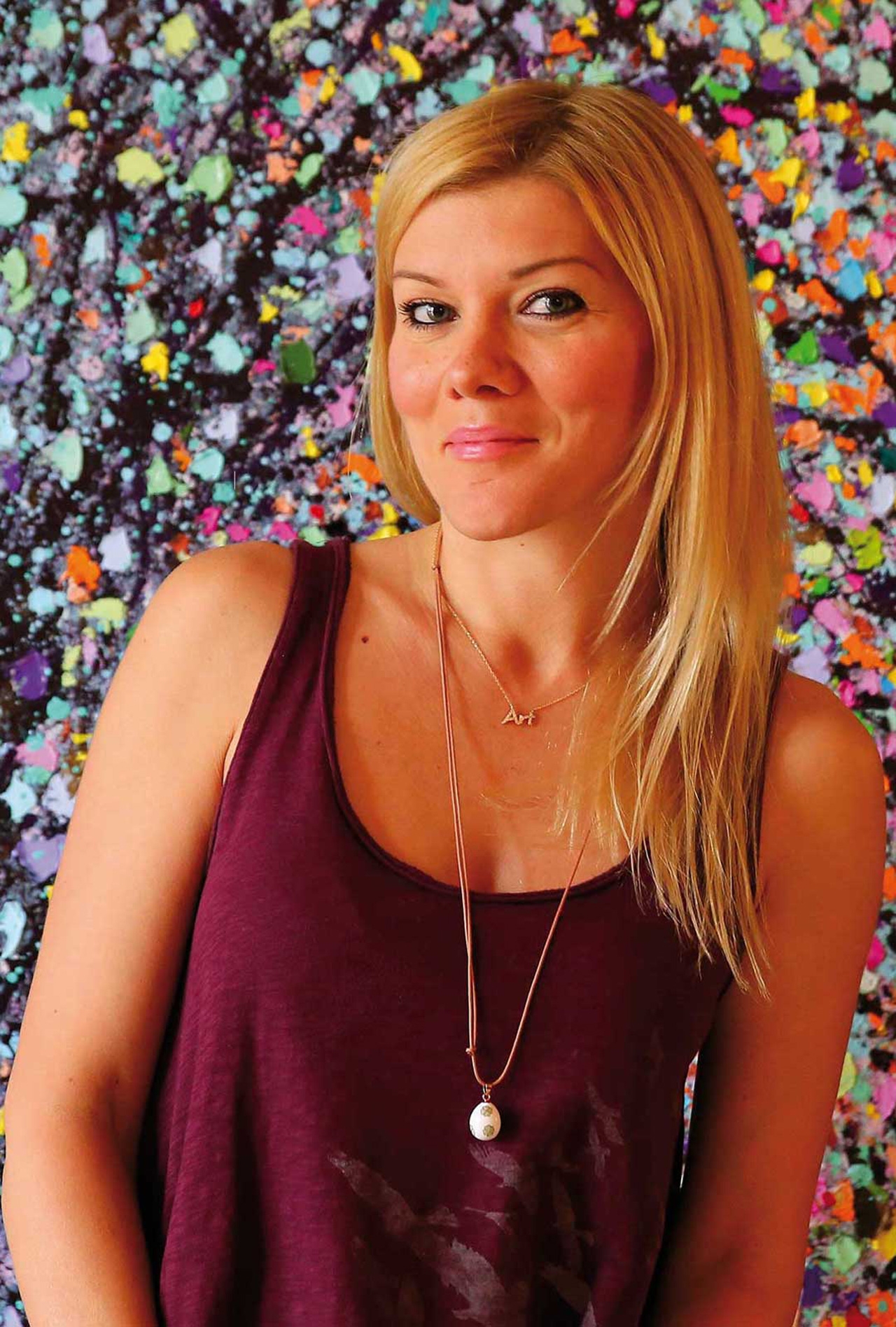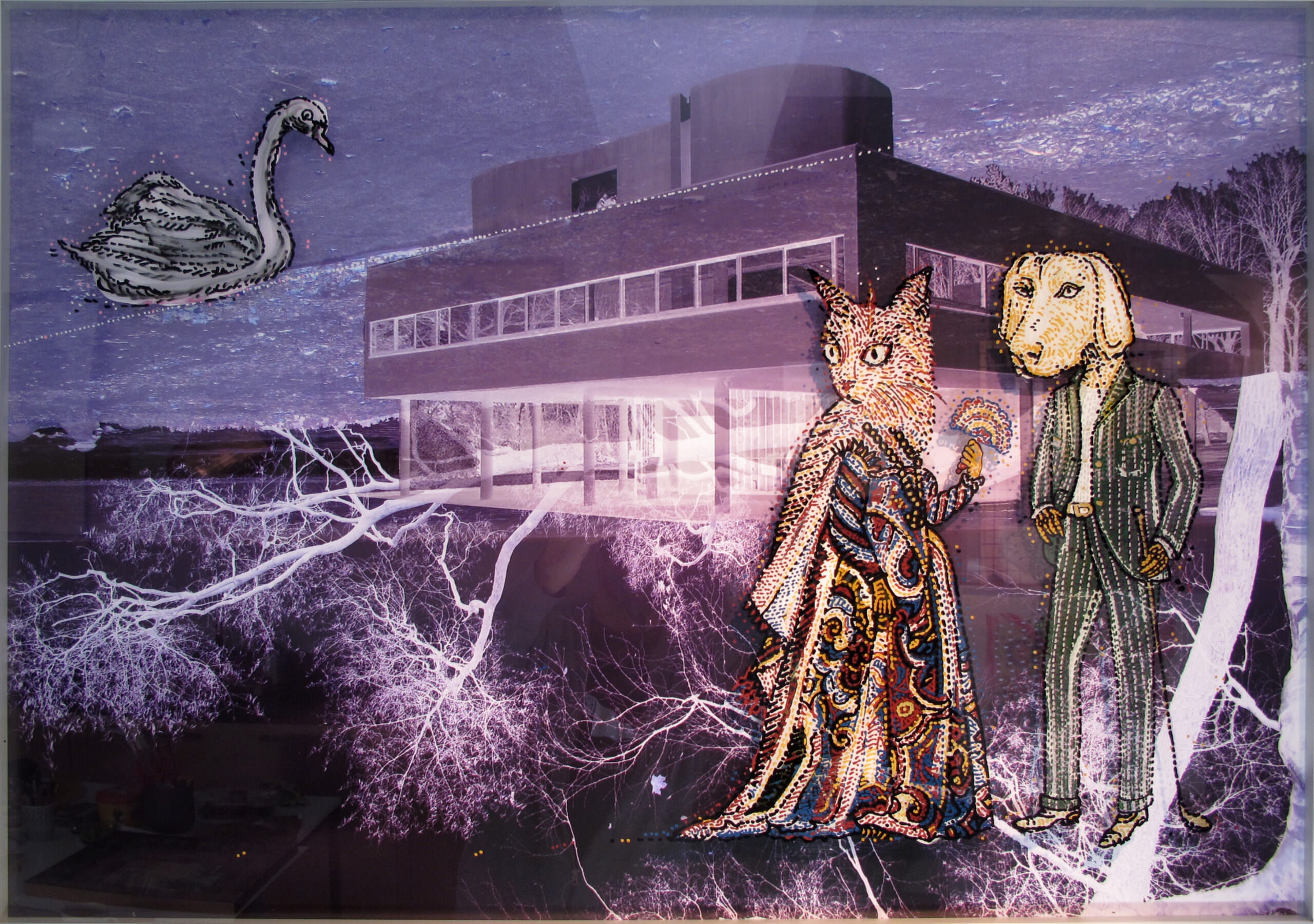Chaos and Harmony.
Most people are terrified of out-of-control, chaotic situations. Milena Dimitrokallis, however, sees in chaos the deepest meaning of creative harmony. It is her aesthetics that dictate what is harmonious and what not, what order and orderliness mean. Chaos is an inspiration to the painter and she knows how to capture it, partake in it and embrace it, in much the same way that a poet, a musician or a writer embraces his or her creation.
In fact, the painting of Milena Dimitrokallis is a lot like music, thus expanding the scope of the visual language. It has the same power as music. It stems from an inner necessity, and colour—the absolutely true element of painting—is the key that opens the gate to her inner world.
Blue, yellow, red, green, orange, purple. Each colour a distinct emotion: love, happiness, passion, serenity, completeness, trust, affection, fear, anger, surprise, sadness. Each colour a musical note in the vast music of the universe.
A lively discourse is taking place between the artist and the spectator: the latter is receiving the vibrations of each painting, enjoying the colour and sensing the painter's emotional state, but also creating his or her own complex, subjective, conscious experience, feeling euphoria, awe, vitality, harmony, or even relief. The spectator is deeply moved by the expressionist character of the paintings, as well as their abstractive tendencies; the expressive power of colours and their unruly handling; the liberated brushstroke and the texture of the material; the forms and gestural script of the painter. And, thus, the painter's introspective adventure finds fulfilment in reciprocation.
Unconventional in the negotiation of her themes, Milena Dimitrokallis heeds chaos and harmony—elements inherent in nature—and translates them into powerful emotions. What she seeks to accomplish is to highlight the interaction between chaos and harmony in our emotional world and explain how it contributes to the creation of abstract forms and shapes, which express its beauty and truth. Her guide in this process is self-knowledge, a difficult but creative and necessary prerequisite for the deeper knowledge of our emotions, at times serving to guide us and, at other times, to mislead us. The set of paintings should not be seen as a whole, since each painting is autonomous. This is inferred by both the titles given to each painting by the painter and the distinct emotions described. Viewers heed the colours and leave the exhibition richer in emotional experience.
Hera Papapostolou
Art Historian & Critic

